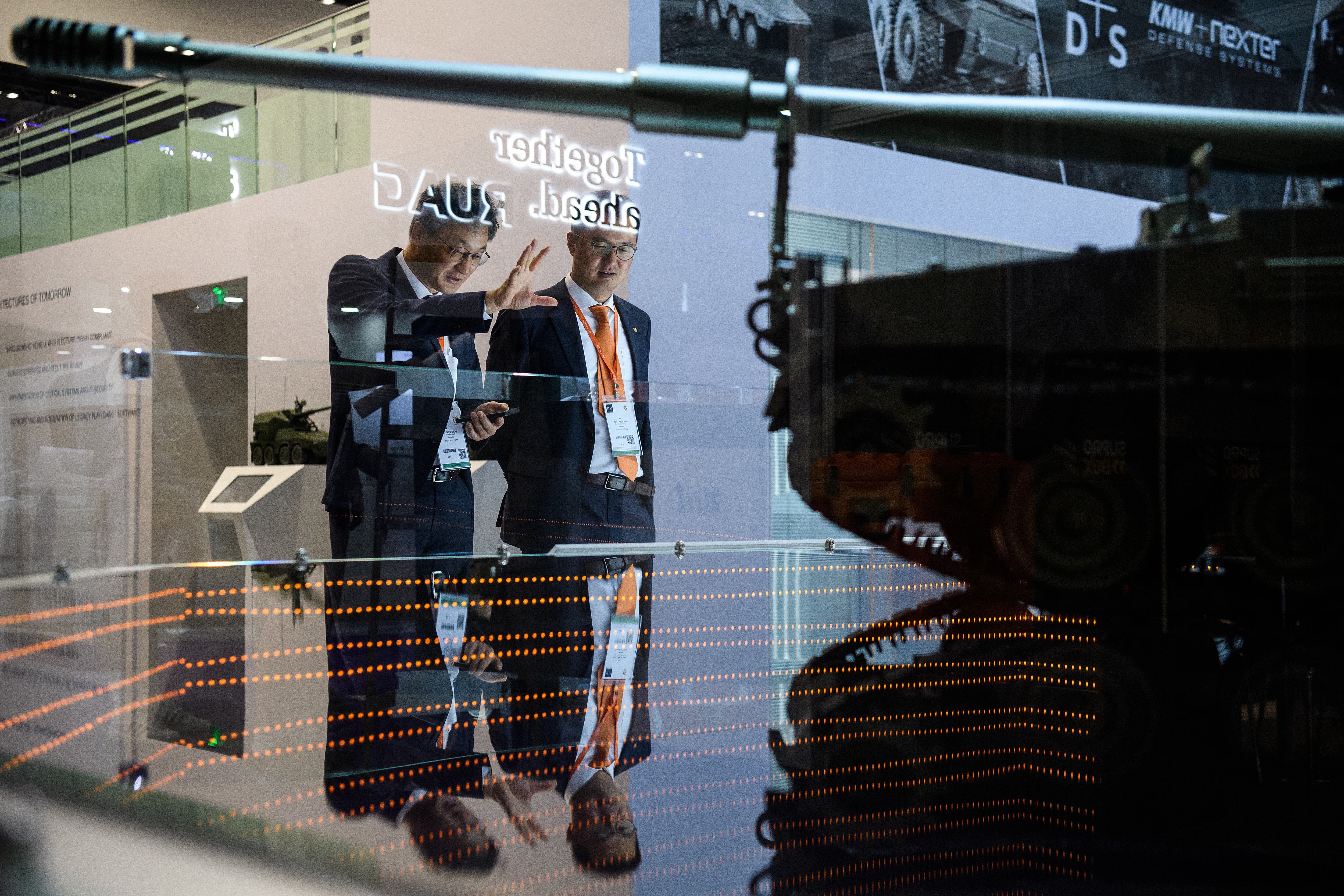This story was updated Feb. 3, 2022, at 9:46 a.m. EST with additional details from Hanwha.
SEOUL and BEIRUT — Hanwha Defense has signed the largest deal to export its K9 self-propelled howitzers and other support vehicles to Egypt, South Korea’s Defense Acquisition Program Administration announced Feb. 1.
The arms agency did not disclose the details of the deal, valued around $1.7 billion, but a source privy to the deal told Defense News that about 200 K9 artillery systems will be supplied to the Egyptian military, along with scores of support vehicles, such as the K10 ammunition resupply vehicles. On Feb. 2, Hanwha confirmed the contract value in a news release.
“The contract is valued around $1.7 billion for hundreds of the K9 Self-Propelled Howitzer (SPH), K10 Ammunition Resupply Vehicles, and K11 Fire Direction Control Vehicle,” the company said. “The K11 Fire Direction Control Vehicle is a new vehicle to be developed for the Egyptian military. Using the K9 chassis, the command-post vehicle will be equipped with a range of high-tech sensor and communication equipment in accordance with operational requirements of the Egyptian Army and Navy.”
Under the deal, most of the artillery and vehicles are scheduled to be locally produced at Factory 200, a state-run defense manufacturing facility just outside the Egyptian capital, while an initial batch is to be delivered by Hanwha Defense, according to the source.
According to the DAPA, the signing ceremony was held at Artillery House in Cairo. The long-awaited deal goes back to at least 2009, when Egypt expressed interest in updating its artillery systems. But efforts were postponed for nearly a decade as the country underwent a revolt — part of what was dubbed the Arab Spring, a wave of pro-democratic protests, revolutions and civil wars in the region that began in 2011.
“The latest deal is the first export of the K9 Self-Propelled Howitzer to Africa following the artillery’s successful exports to European and Asia-Pacific nations,” DAPA said. “This is the largest K9 deal in scale, making Egypt the eighth country to operate the K9.”
RELATED

Hanwha Defense, a land systems developer affiliated with Hanwha Group, participated in the Egypt Defence Expo from Nov. 29 to Dec. 2, during which it displayed its self-propelled gun. On the opening day of the show, Egyptian President Abdel-Fattah el-Sissi met with Son Jae-il, president and CEO of Hanwha Defense, to discuss bilateral cooperation, including the potential acquisition of the artillery systems.
At the time, the Egyptian presidential office said the meeting “reviewed opportunities to strengthen joint cooperation in light of the modern technological and manufacturing capabilities of the Korean company.”
Also in attendance were the minister of defense and military production, Gen. Mohamed Zaki; the head of the Armed Forces Financial Affairs Authority, Maj. Gen. Ahmed El-Shazly; and the director of the military’s Armament Authority, Maj. Gen. Osama Ezzat.
The K9 accounts for nearly 50 percent of the global self-propelled howitzer market, as it is in service with seven countries: South Korea, Turkey, Poland, India, Finland, Norway and Estonia. Australia recently signed a deal for the K9 under its Project LAND 8116 Phase 1.
The tracked artillery system meets NATO standards and can be deployed in a large range of environments, including snowy terrain and deserts.
Equipped with a 360-degree rotating turret, the 47-ton weapon has a firing range of 40 kilometers and moves as fast as 67 kph. Fitted with an automatic fire control system, the howitzer can fire within 30 seconds from a stationary position and within 60 seconds while on the move, with a burst rate of fire from six to eight rounds per minute.
Egypt’s land forces currently operate versions A2, A3 and A5 of the American-made M109 howitzer.
Brian Kim was a South Korea correspondent for Defense News.
Agnes Helou was a Middle East correspondent for Defense News. Her interests include missile defense, cybersecurity, the interoperability of weapons systems and strategic issues in the Middle East and Gulf region.








